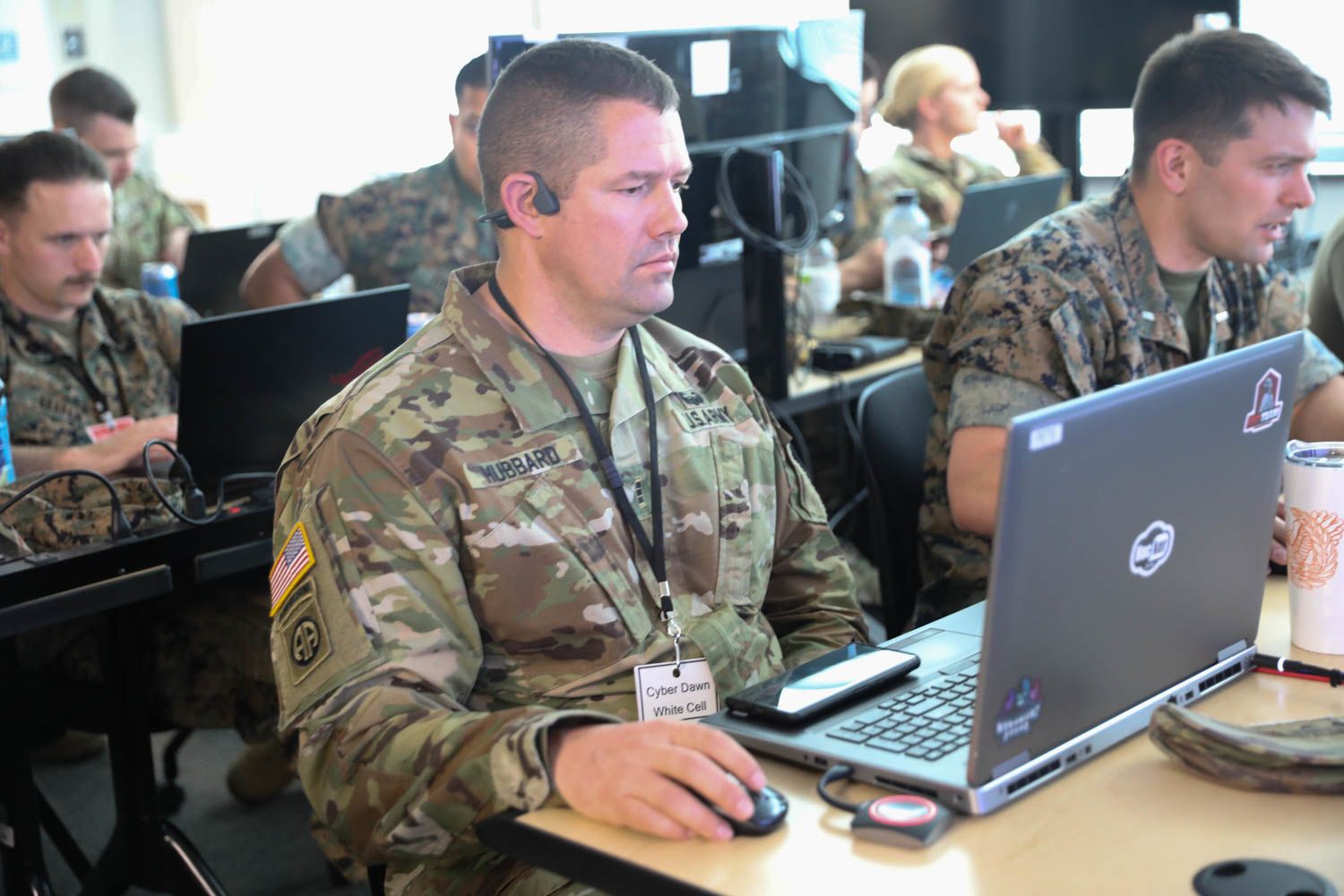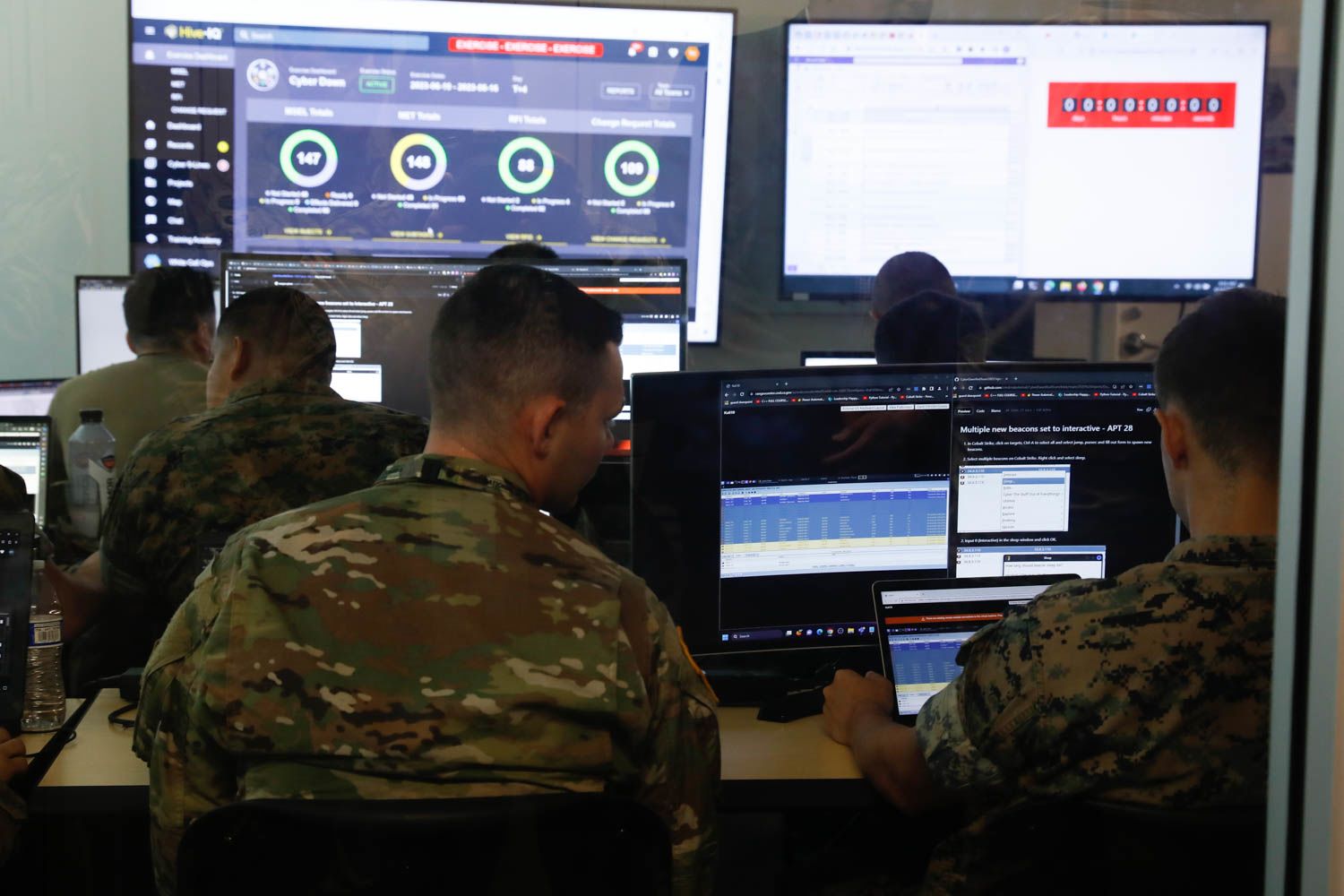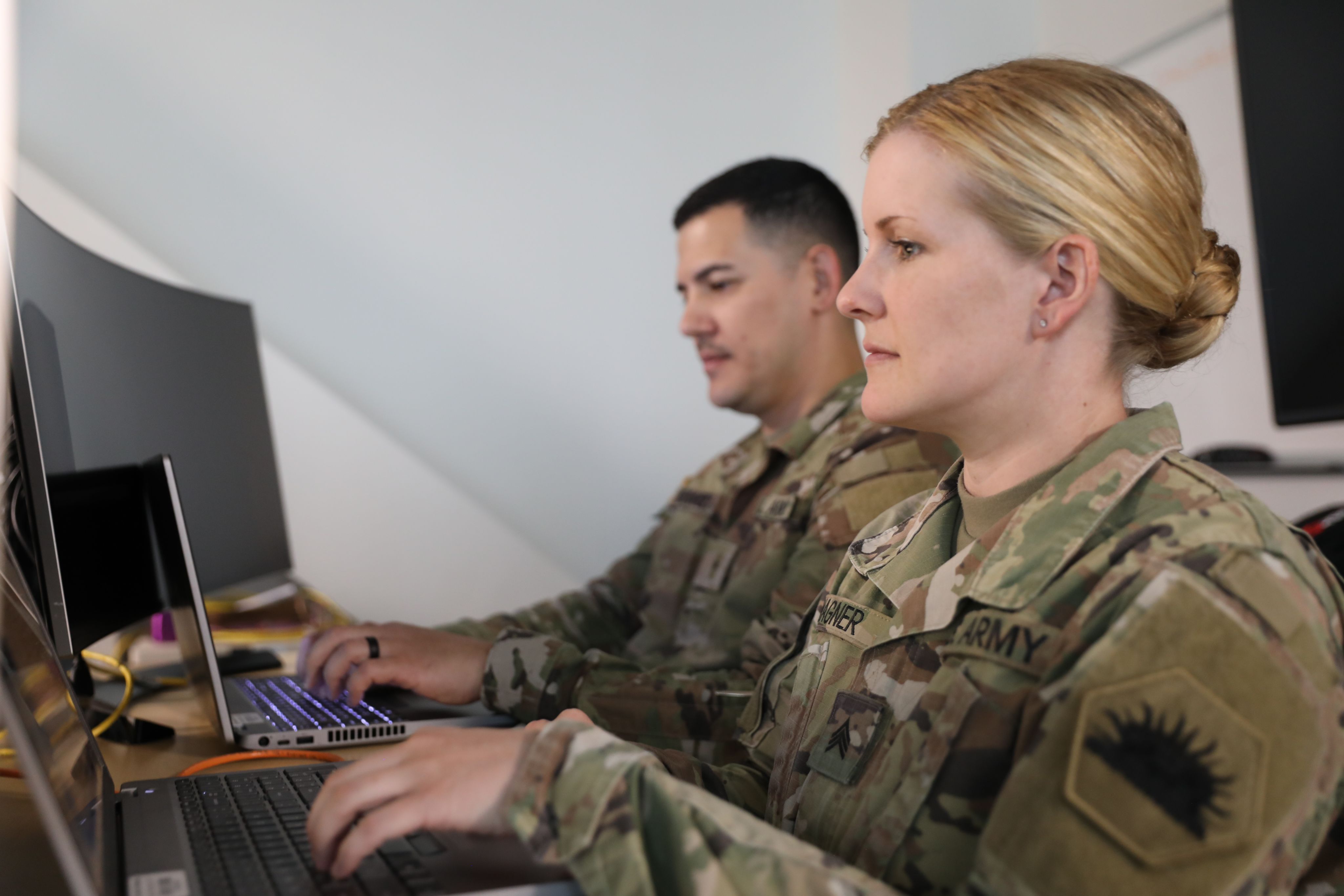The Cyber Battlefield
California Military Department defends the cyber realm of the West Coast during Cyber Dawn 2023

Joint Agency service members discuss the importance of Cyber Dawn at the Okinawa Armory, Sacramento, Calif., June 14.. Cyber defense needs to be practiced and updated regularly because of the quick evolution of technology in today's world. (U.S. Air National Guard video by Tech. Sgt. Christian Jadot)
Joint Agency service members discuss the importance of Cyber Dawn at the Okinawa Armory, Sacramento, Calif., June 14.. Cyber defense needs to be practiced and updated regularly because of the quick evolution of technology in today's world. (U.S. Air National Guard video by Tech. Sgt. Christian Jadot)
by Sgt. 1st Class Kimberly Hill
69th Public Affairs Detachment
June 22, 2023
SACRAMENTO, Calif.,--The quiet room is a far cry from what most would imagine a military warfare exercise to look like. The only sounds are low voices, the hum of computers and the clacking of keyboards. Airmen and Soldiers stare intently at their screens, the blue glow lighting up their faces as their eyes move over streams of information.
Despite the lack of explosions, gunfire or even raised voices, these quiet rooms are where service members from all over the west coast are training to face one of the most ominous threats on the battlefield. The Cyber threat.
From hackings of utility and public entities on a local level, to the disruption of infrastructure and services prior to military conflict, cyber and electronic warfare is increasingly the first strike in sowing the seeds of chaos and disinformation.
“Our aim is to train incident responders in FEMA Region IX so that in the state of California if there are any cyber security incidents we can respond,” said U.S. Army Lt. Col. Mikael Magnuson, the cyber network defense chief with the California Military Department.
Service members with the California Military Department participated in Cyber Dawn, an annual regional multiagency exercise at Okinawa Armory, Sacramento, Calif., June 3-17, 2023.
National Guard units, like California’s Joint Cyber Team, are increasingly used on a state and federal level to help combat these attacks, and to keep their keyboard skills quick, training exercises like Cyber Dawn are crucial in developing the protocols and best practices of Cyber Warfare, said Magnuson.
“It’s not very often that these teams with their units get to really put their skills to the test like this, it also keeps us ready to respond,” said U.S. Marine Cpl. Gabriel Justinich, a cyber warfare operator with the 6th Communications Battalion.
The exercise included members of the California National Guard’s 144th Fighter Wing, the 195th Wing, CMD’s Joint Task Force Cyber, the Hawaii and Arizona National Guard, U.S. Marine Corps Forces Cyberspace Command, U.S. Coast Guard’s 1790 Cyber Protection Team and the U.S. Air Force’s 48th Intelligence Support Squadron.
Service members spent the first week of the training exercise receiving individual skills training before spending the second week divided into teams pitted against each other with conflicting goals.
The Blue team members worked together to identify and assess different threats to the networks they were assigned to protect. Network operators were comprised of local and state agencies, including representatives from the City of Roseville, California Franchise Tax Board, California Highway Patrol and the town of Truckee.
While the Blue team was busy defending, the Red team was tasked with the adversarial role as advanced persistent threats, to disrupt and attack cyber operations in each of the Blue team’s cells networks.
For those new to the field, the exercise proved to be a difficult but rewarding exercise where they could practice their skills.
“As I kept asking questions and bringing it back to my laptop and trying to push it through, it helped me a lot, and it made me want to come back to Cyber Dawn next year,” said U.S. Air Force Senior Airman Ranessa Spencer, a cyber systems operator journeyman with the 222nd Information Support Squadron, 195th Wing.
The goal of these exercises is not only to share best practices among the branches and state and federal agencies; it also serves as a familiarization practice, since, all attendees are part of FEMA Region IX, and may be working together if a cyber incident threatens the region.
“We’re able to not only trade the best tools and practices, but also in case of a large-scale cyber incident response, it’s likely that we would see some of these same characters. It’s nice to just know who people are so we have connections, and we have relationships built already,” said Magnuson.





